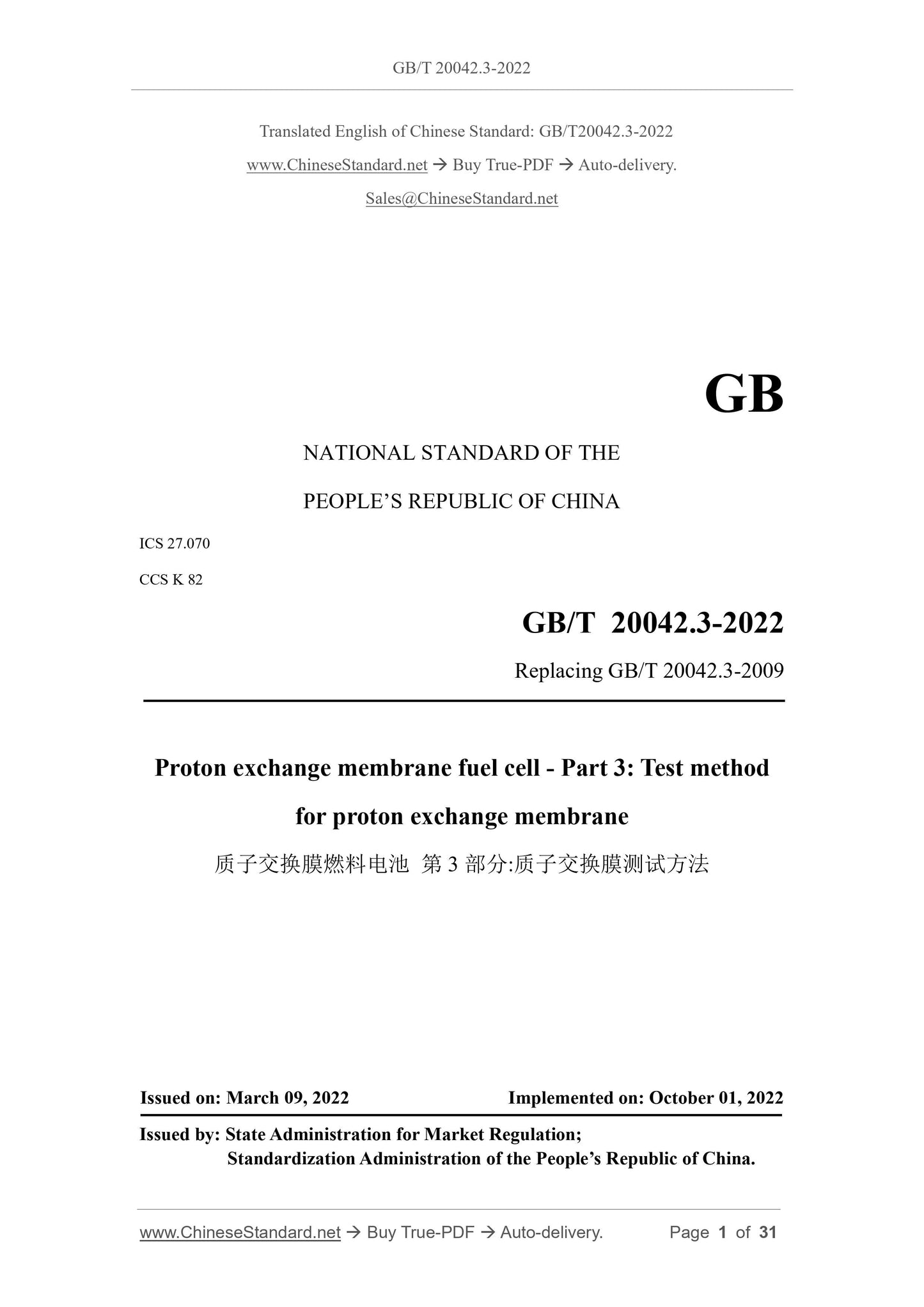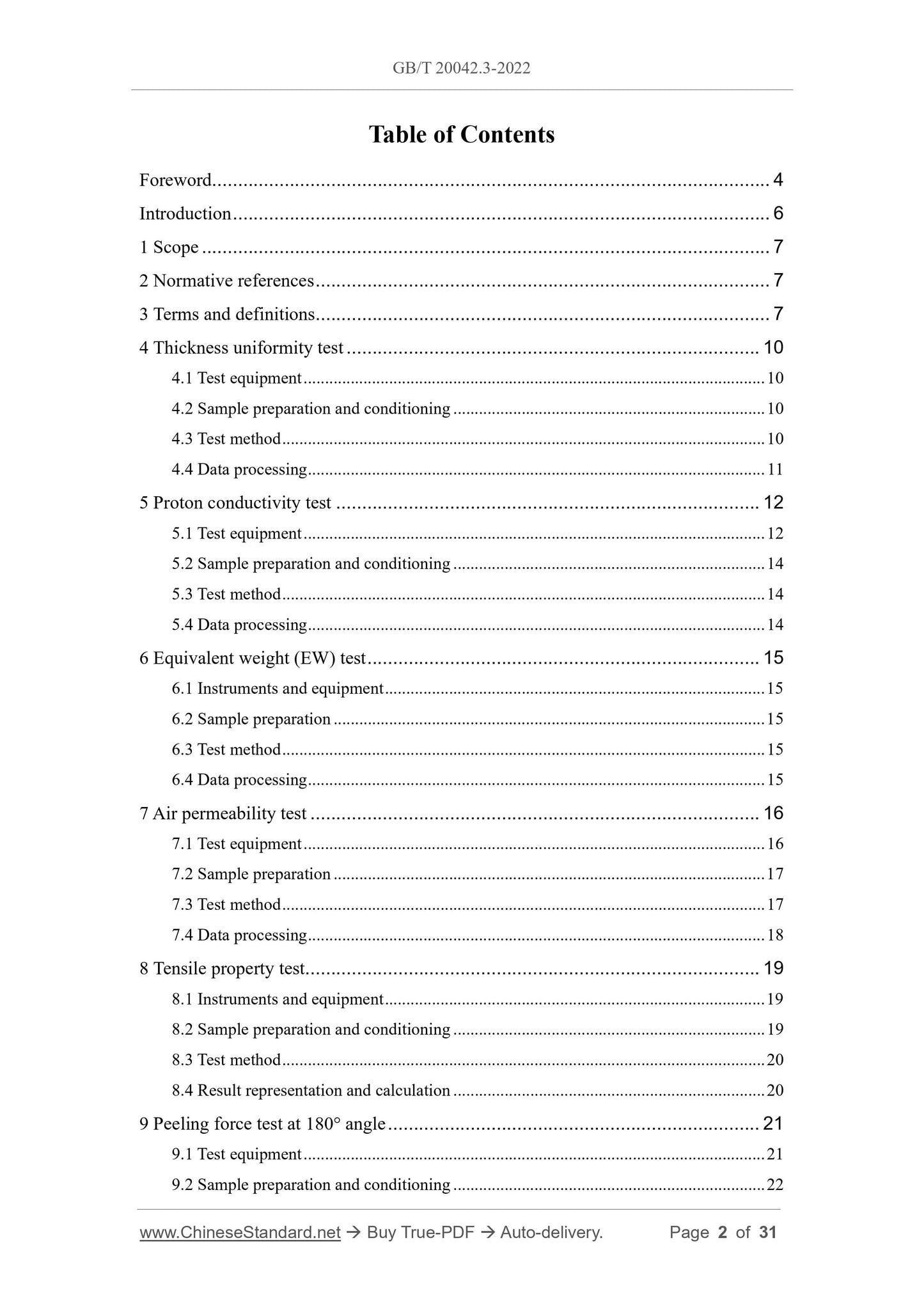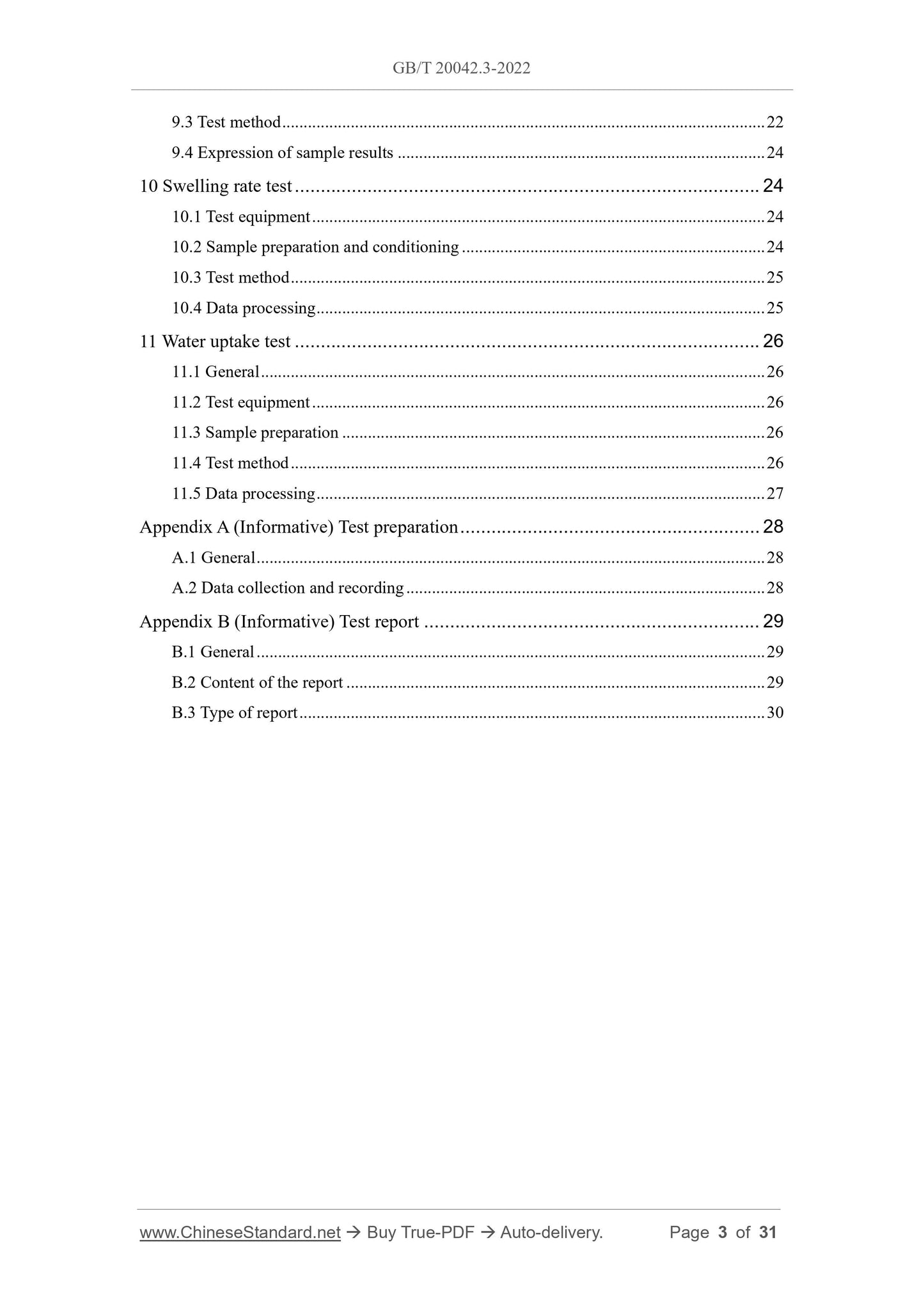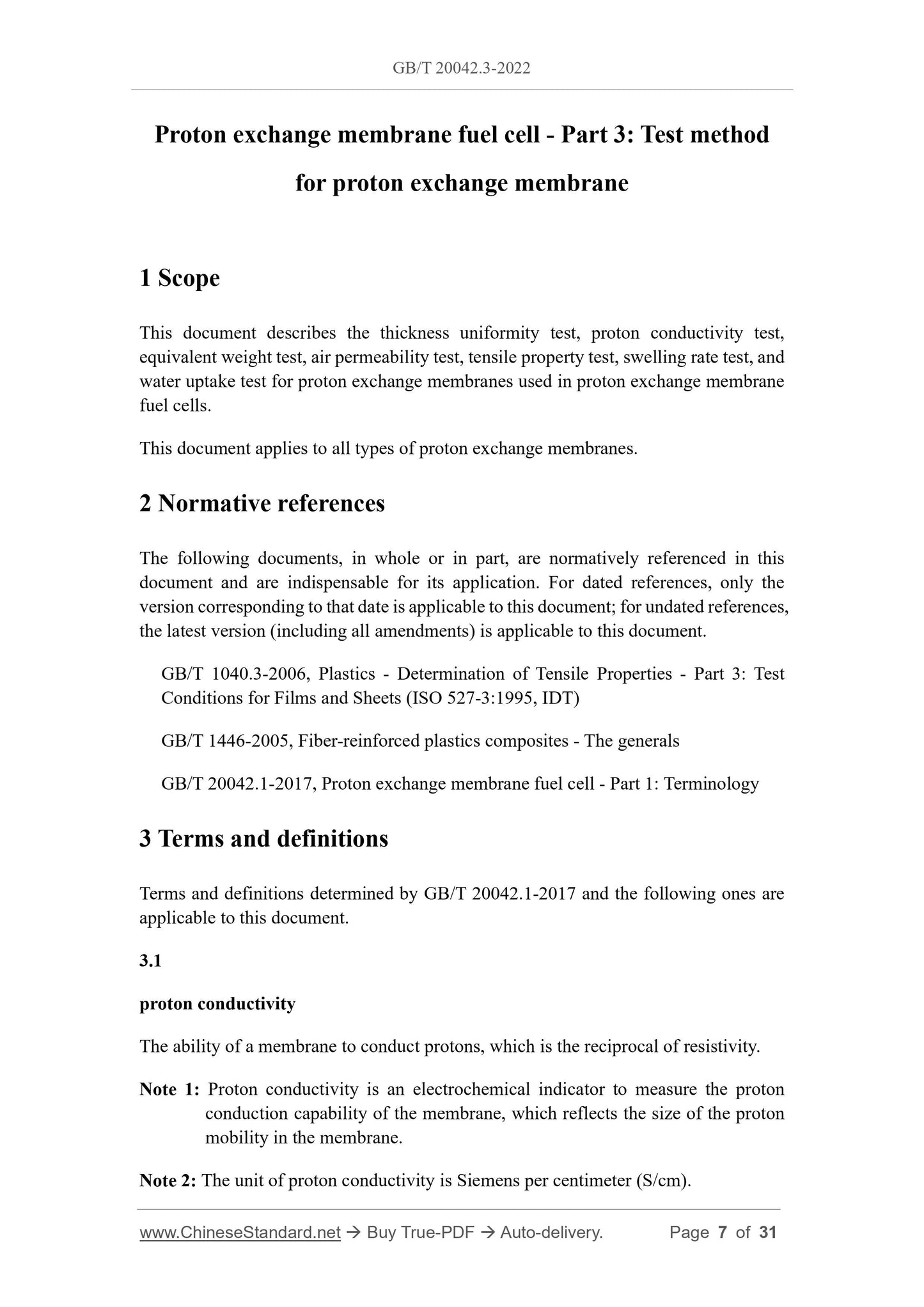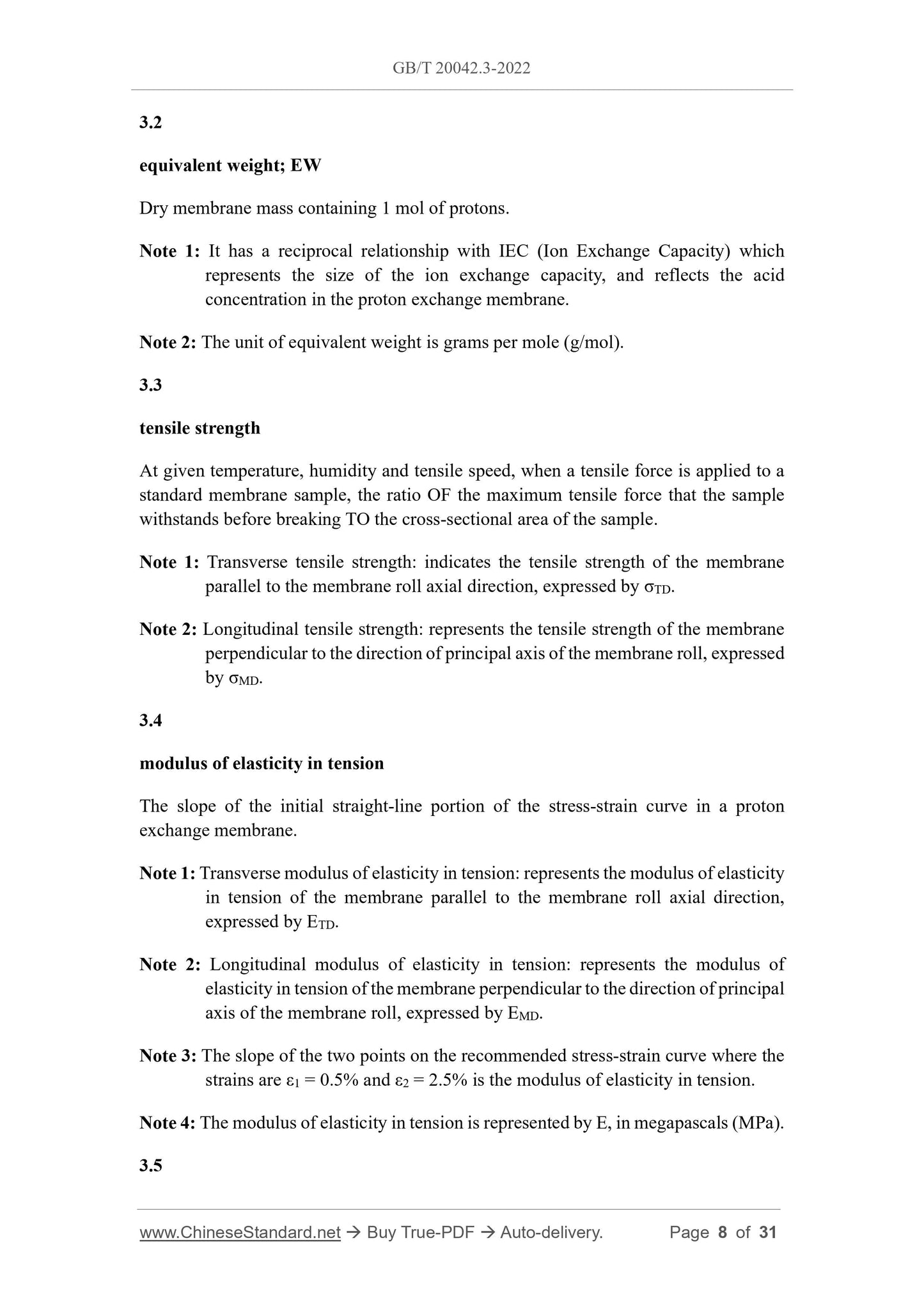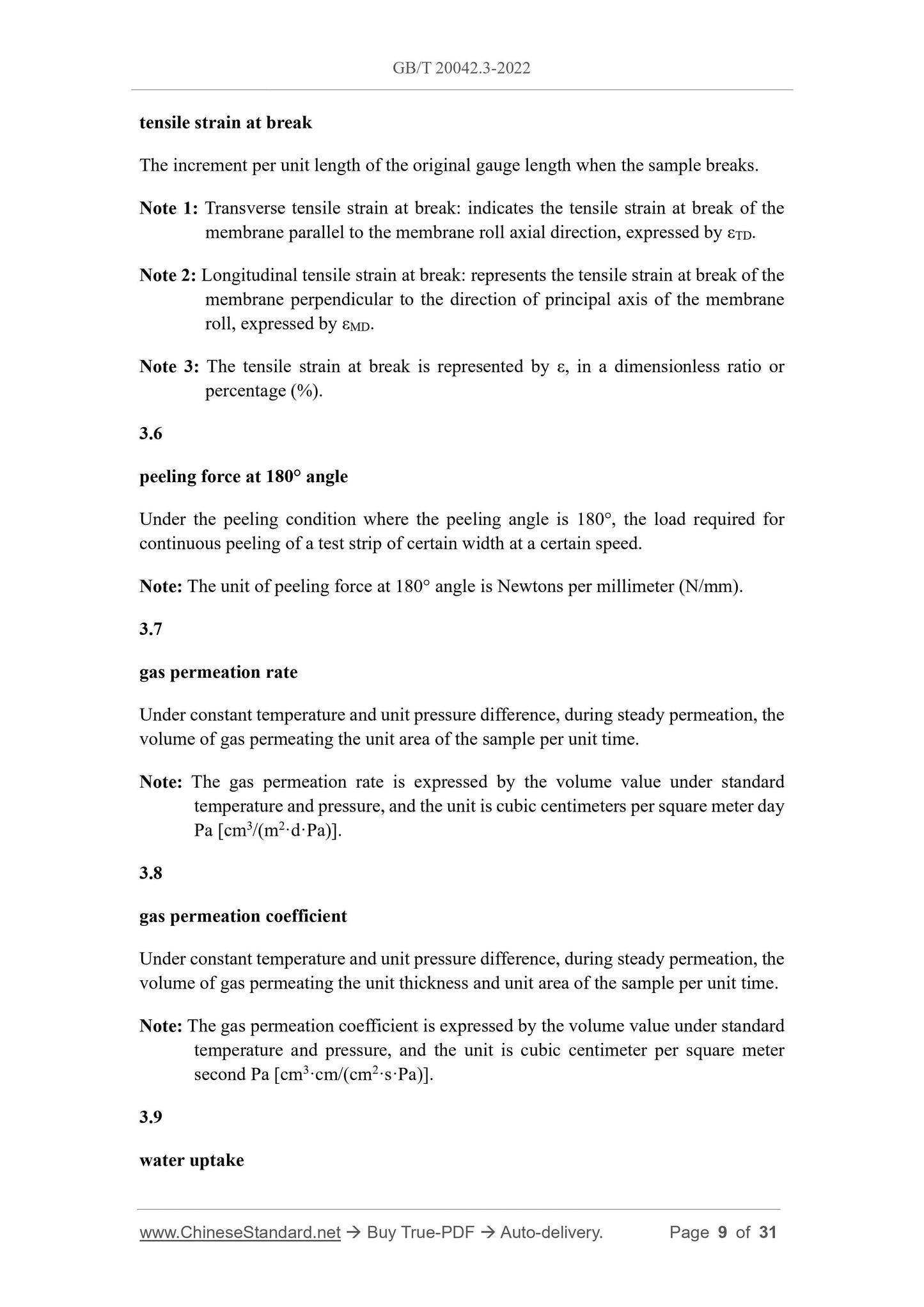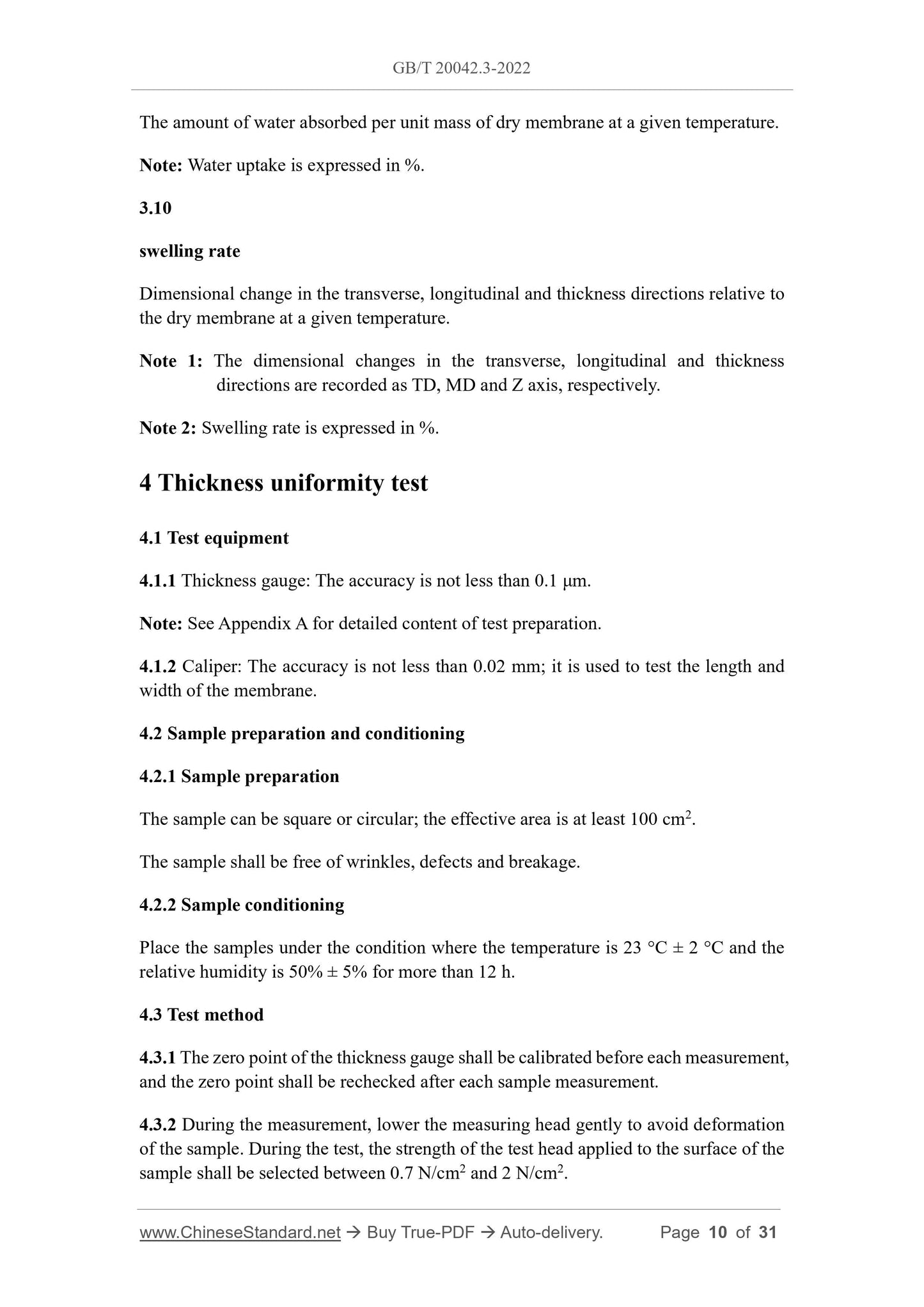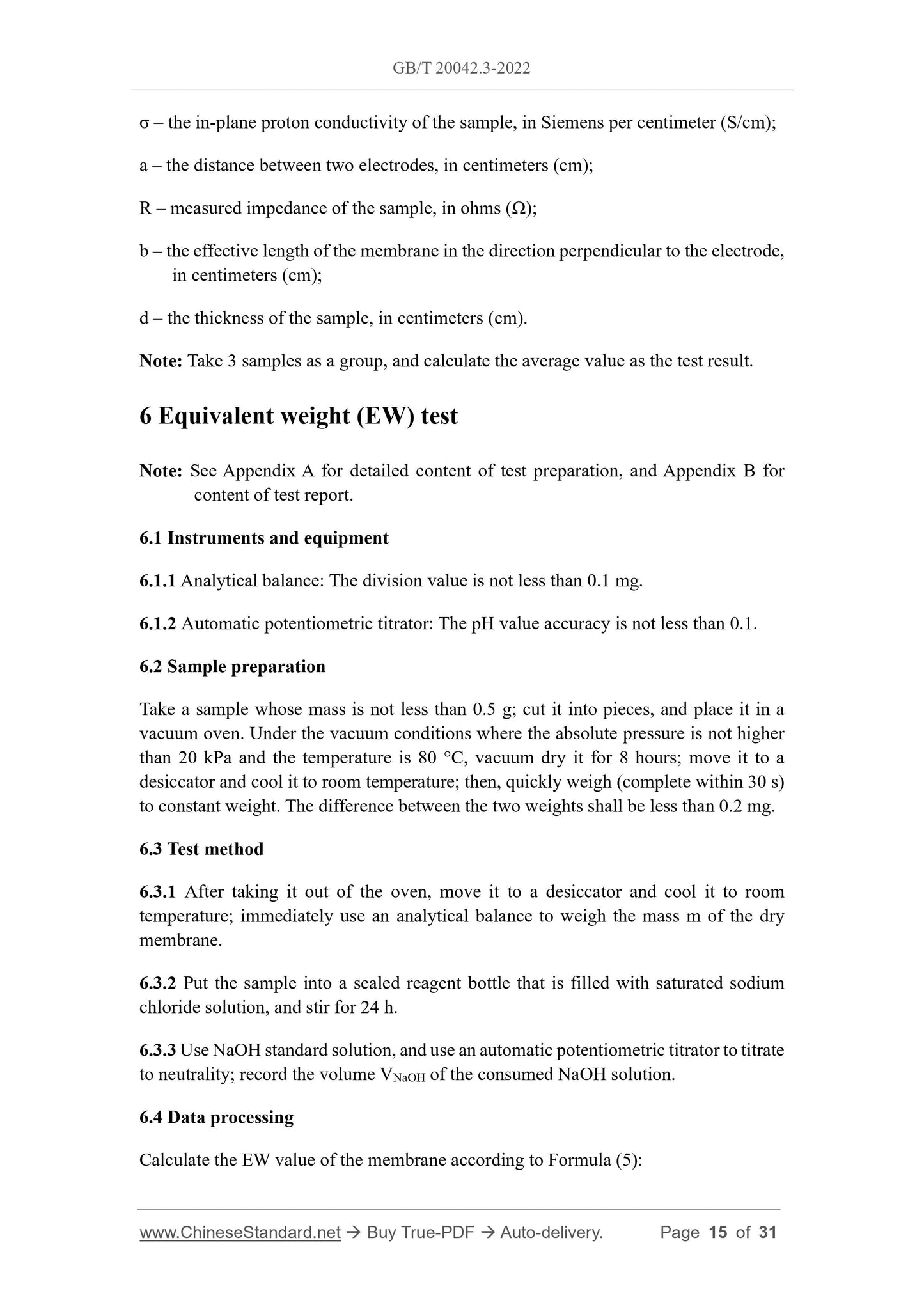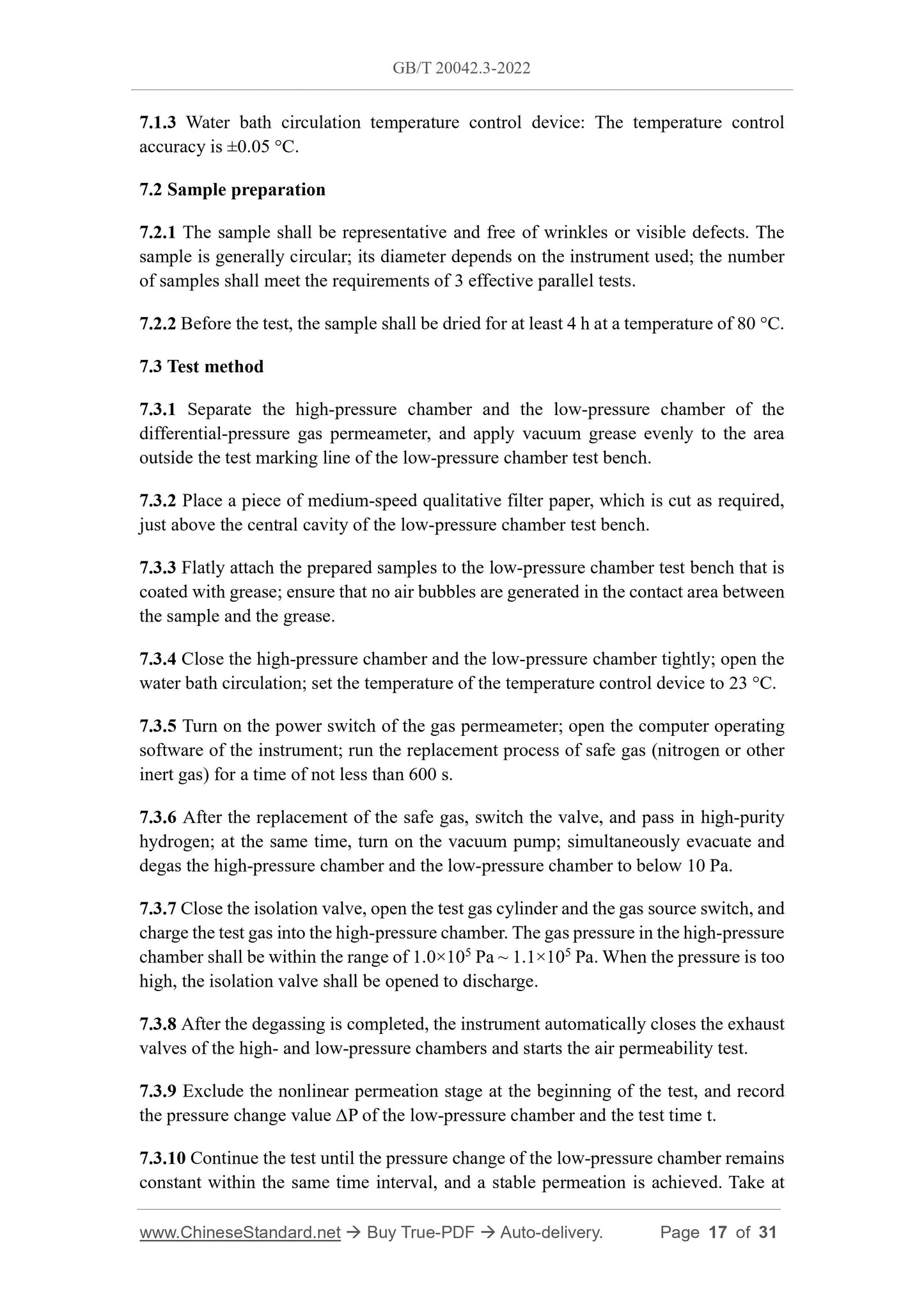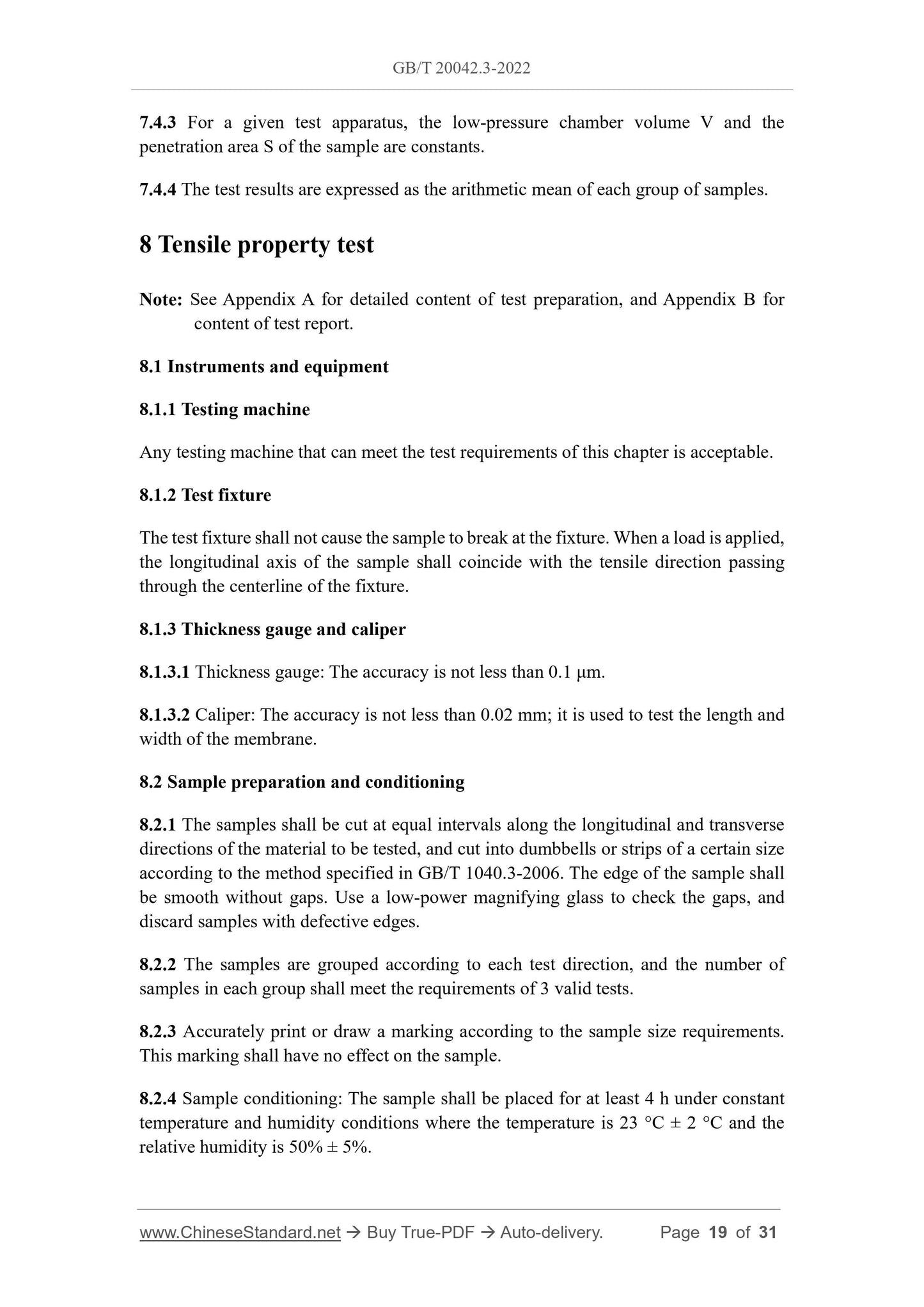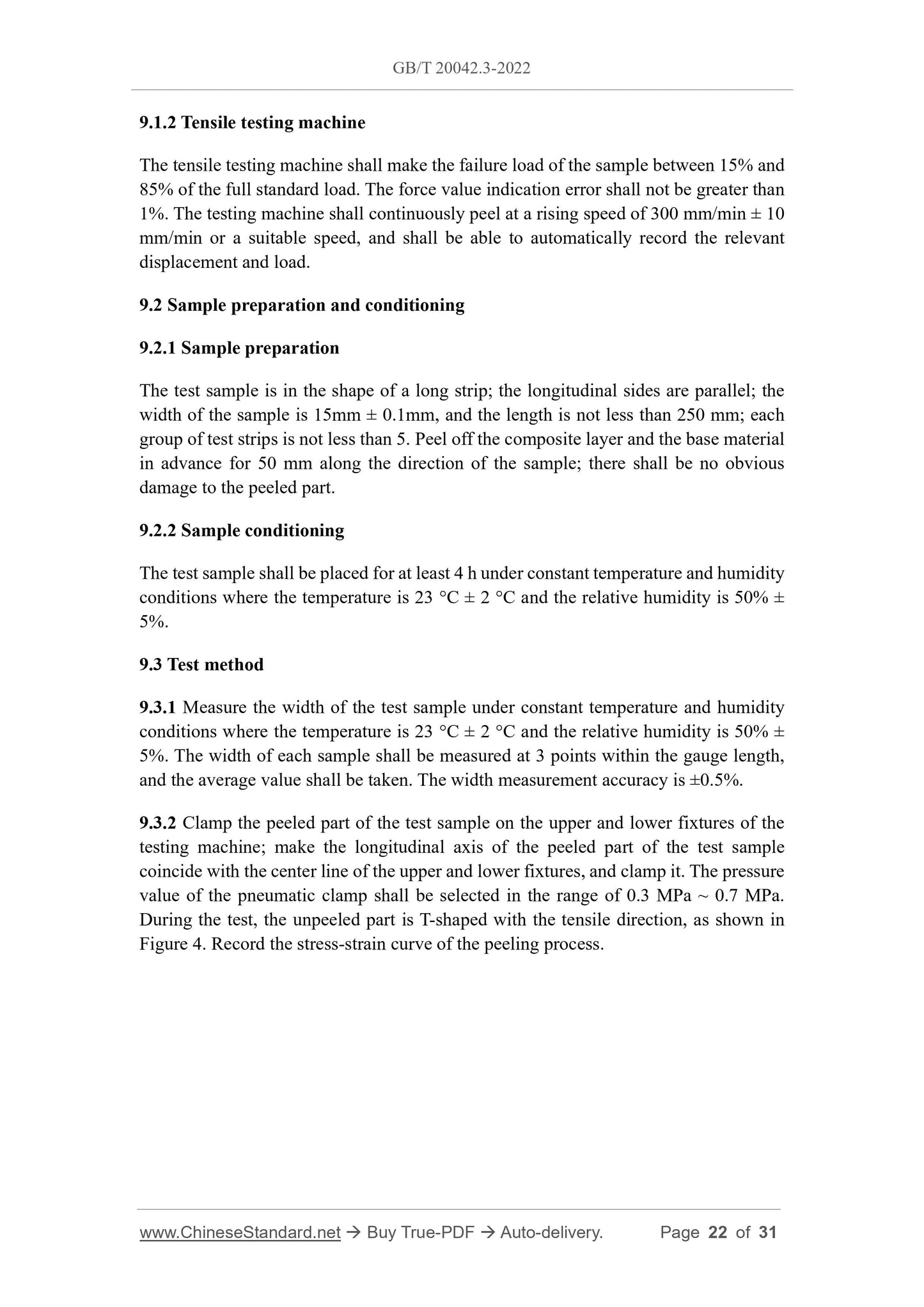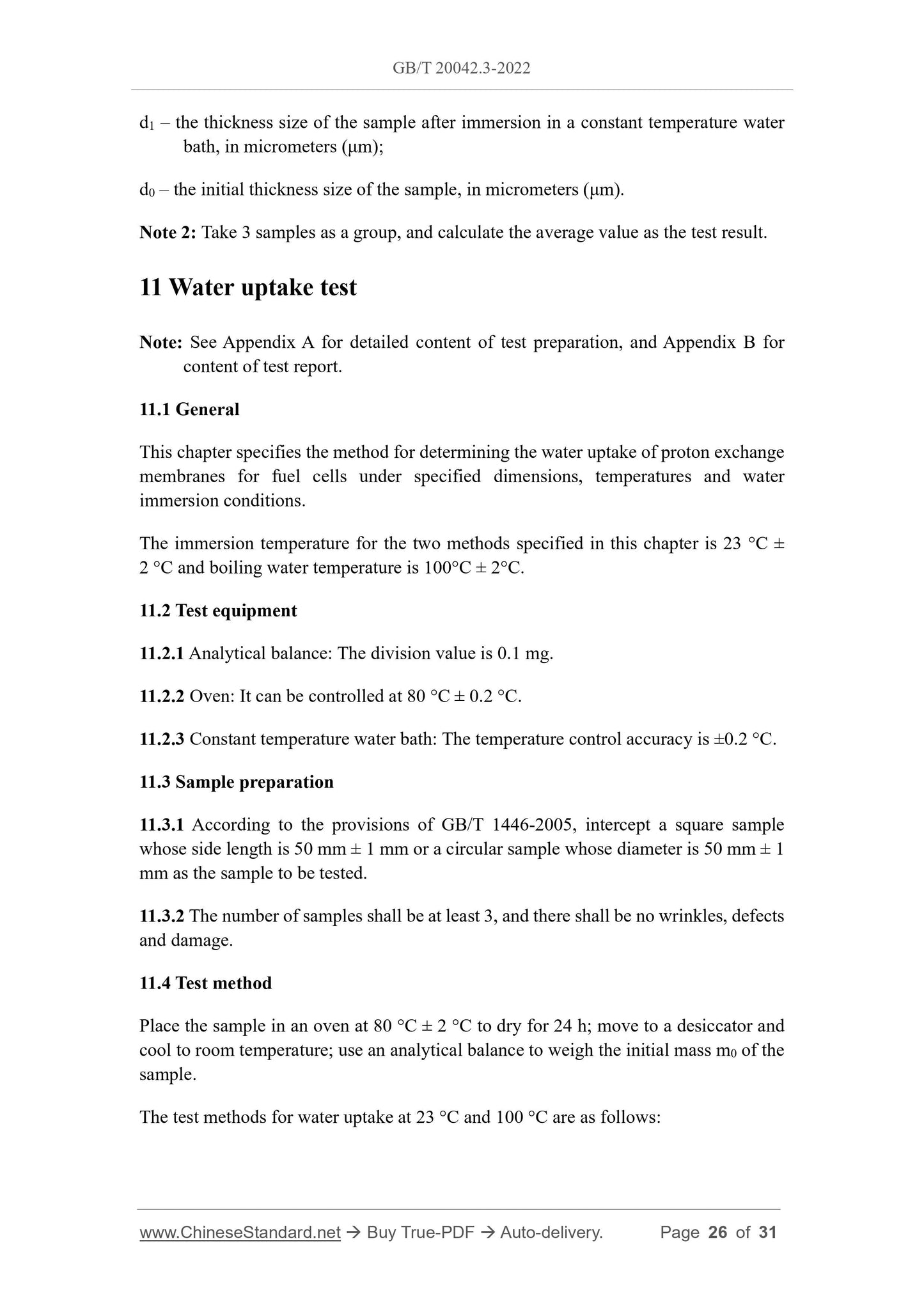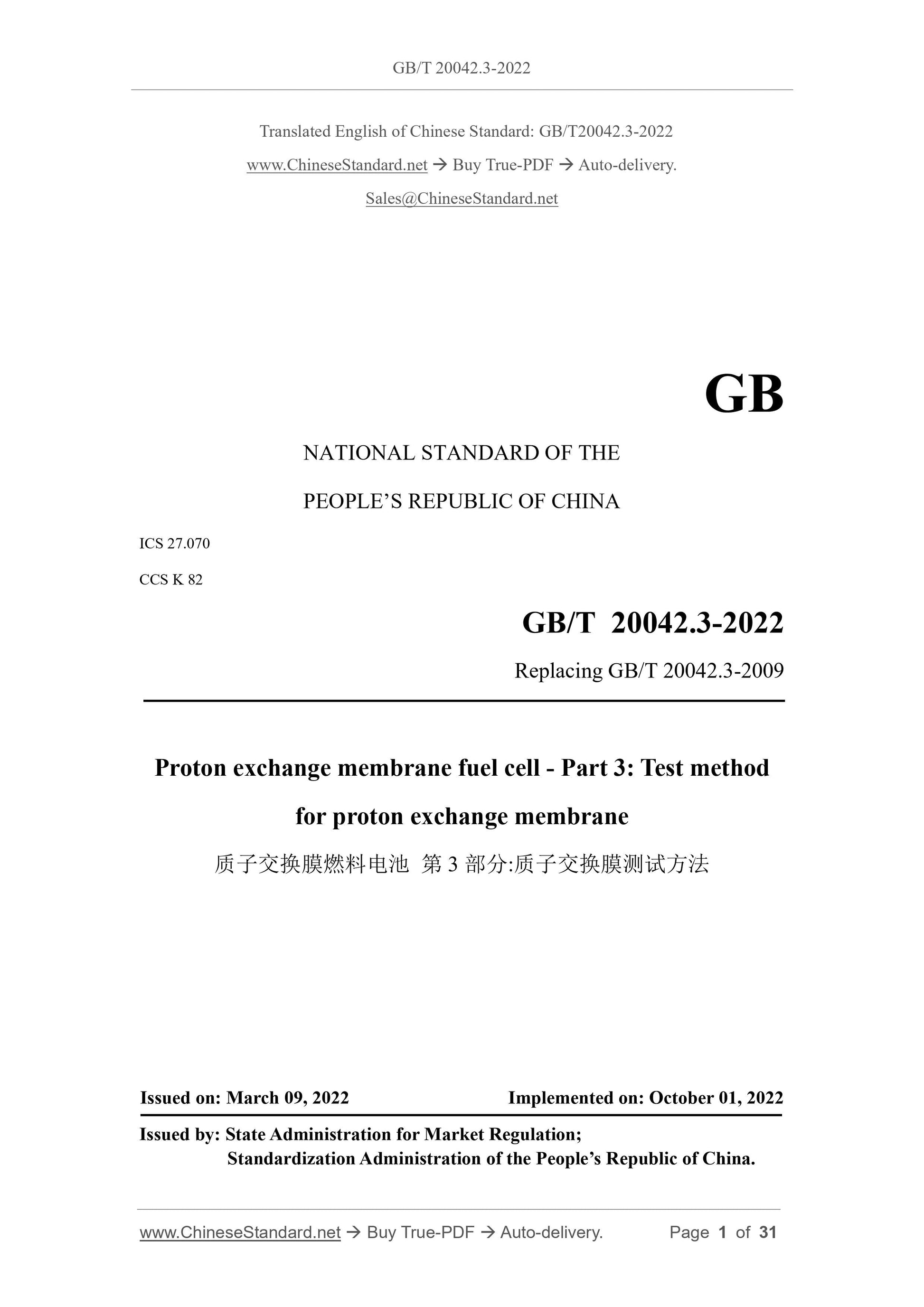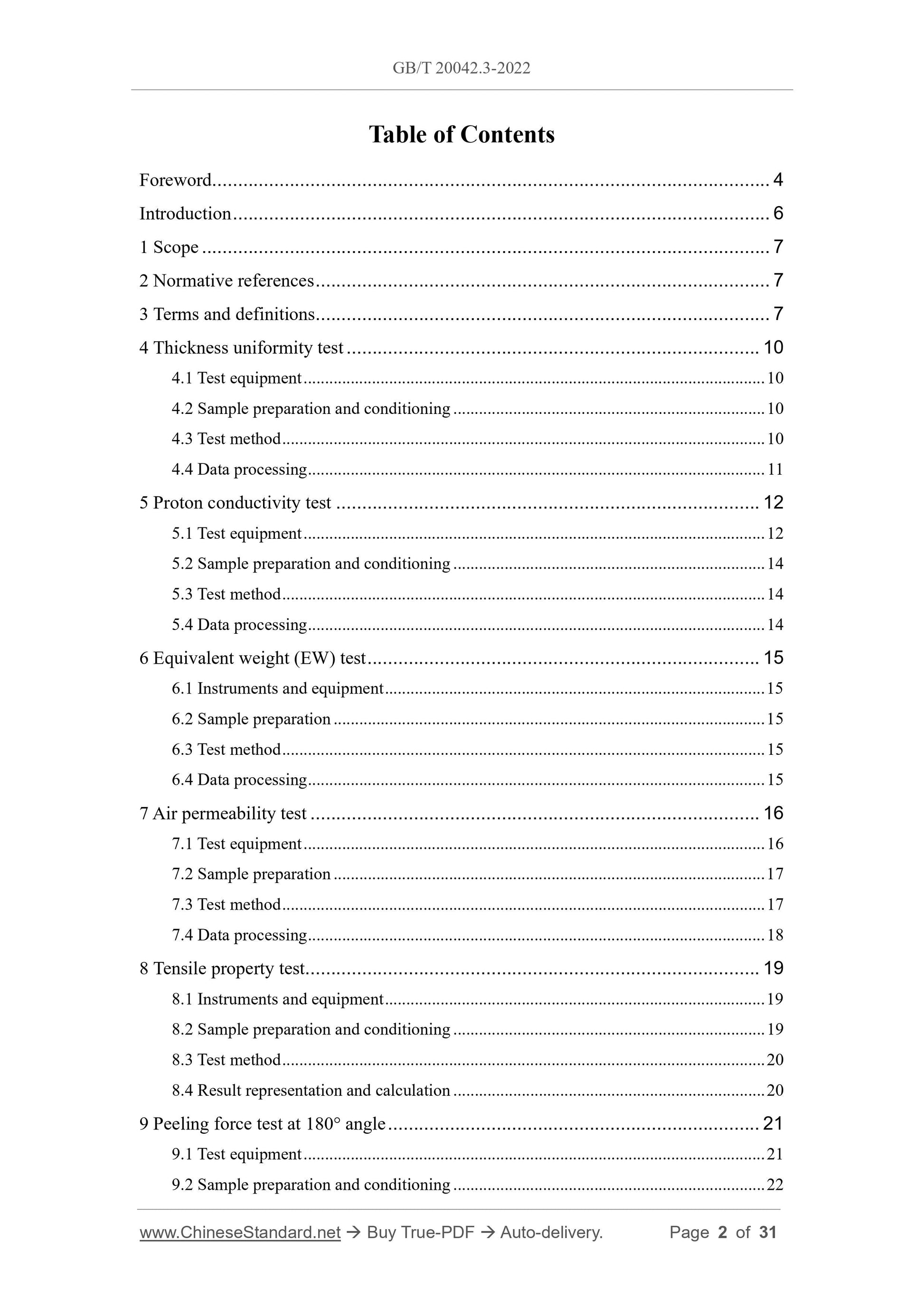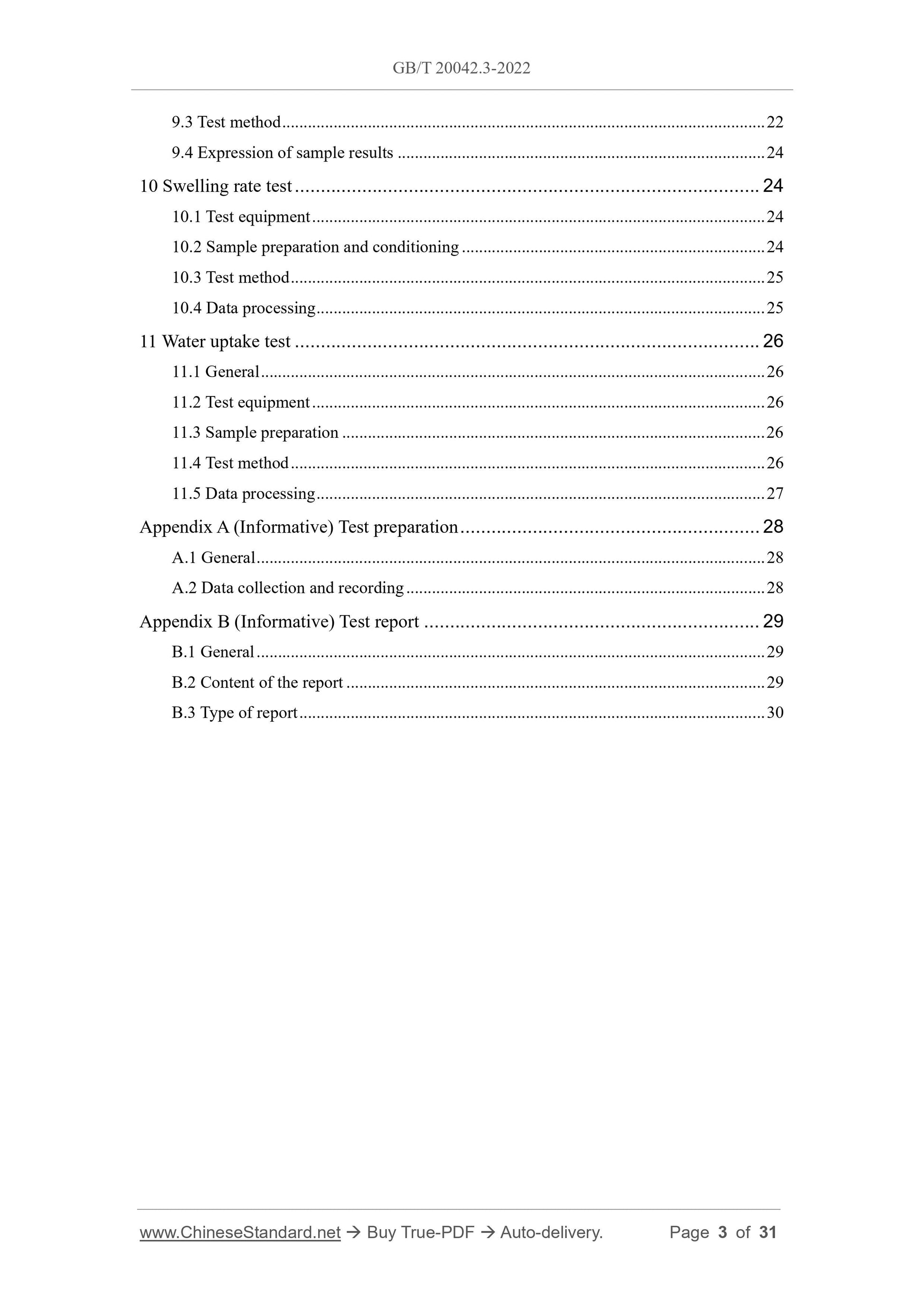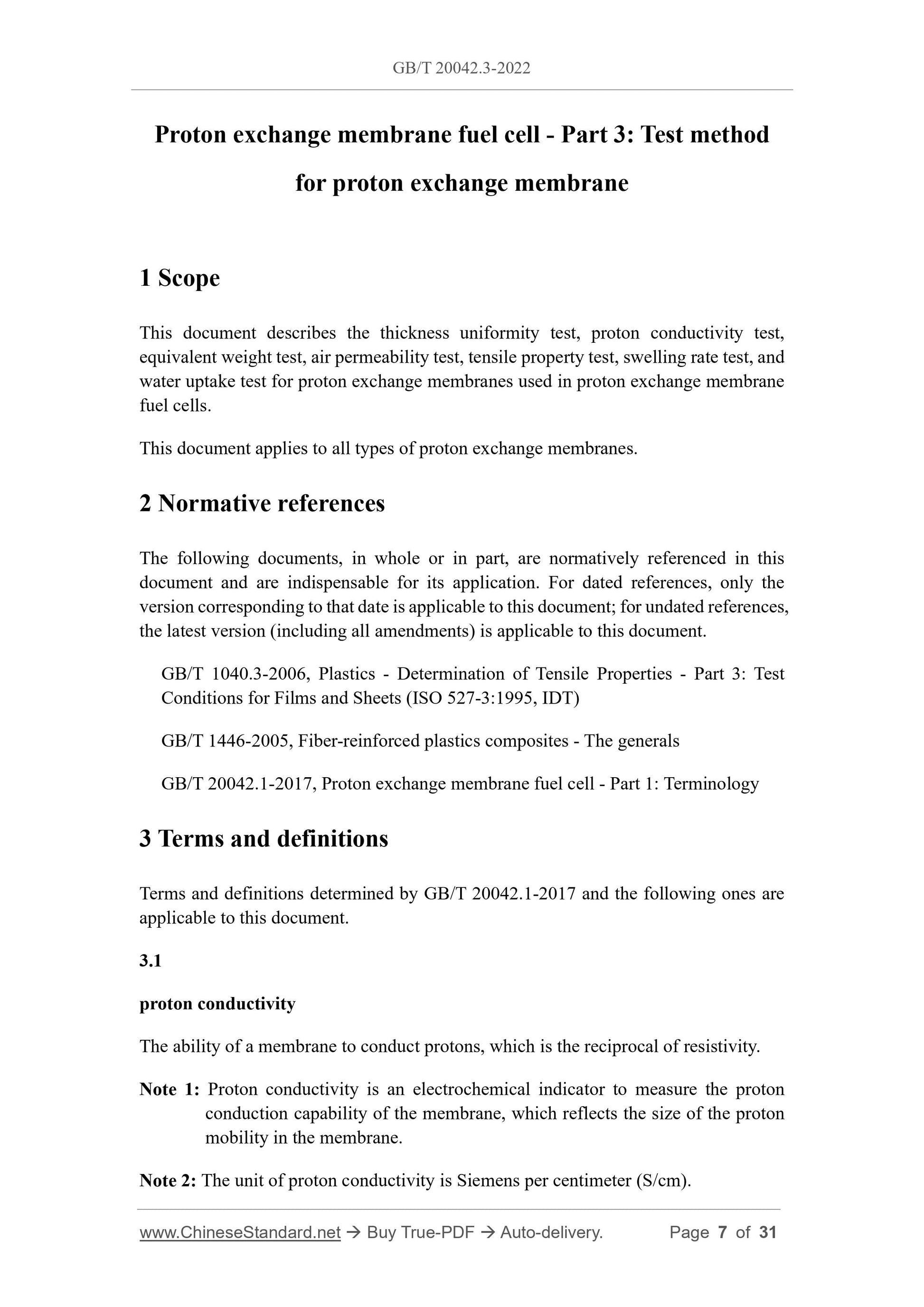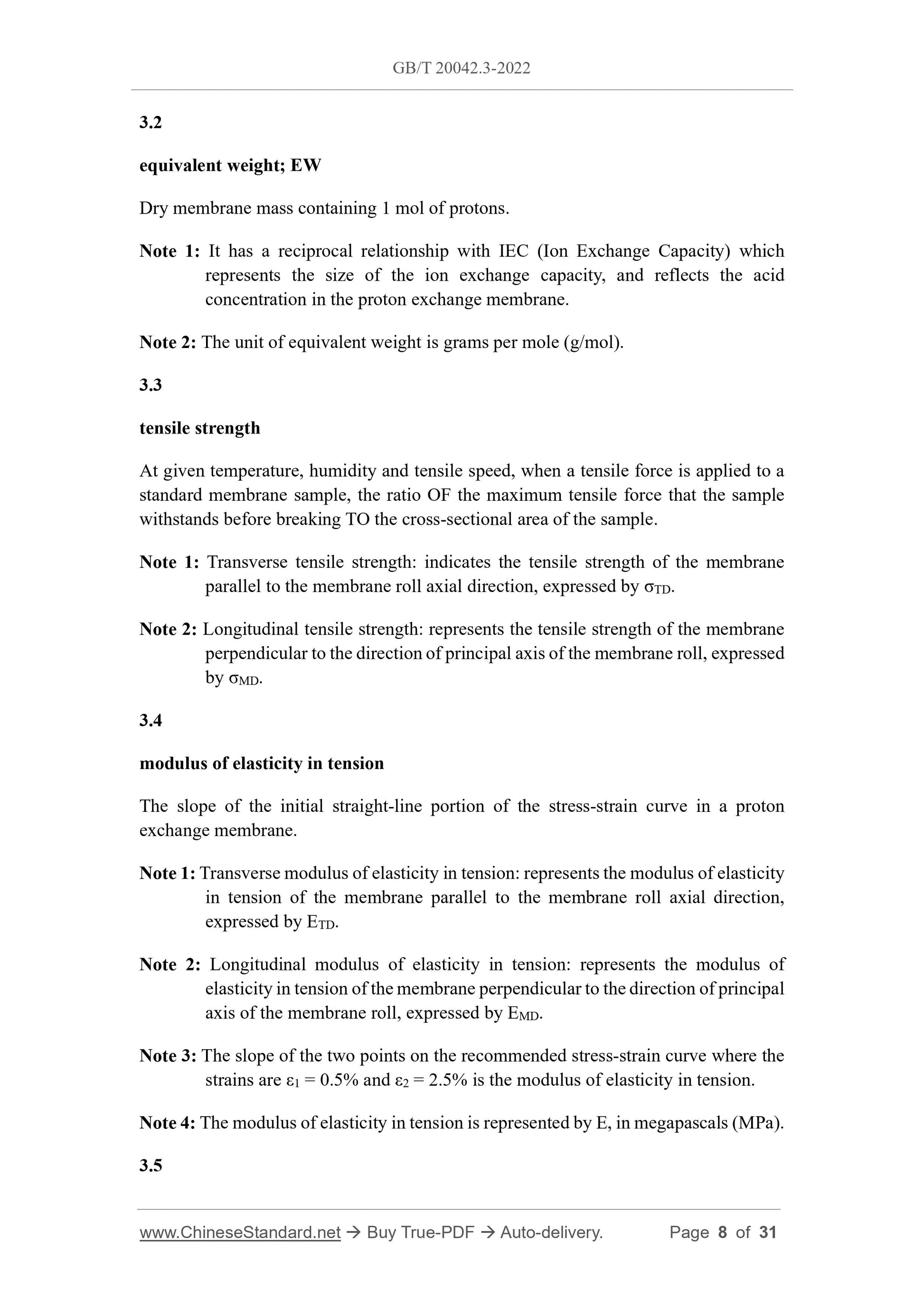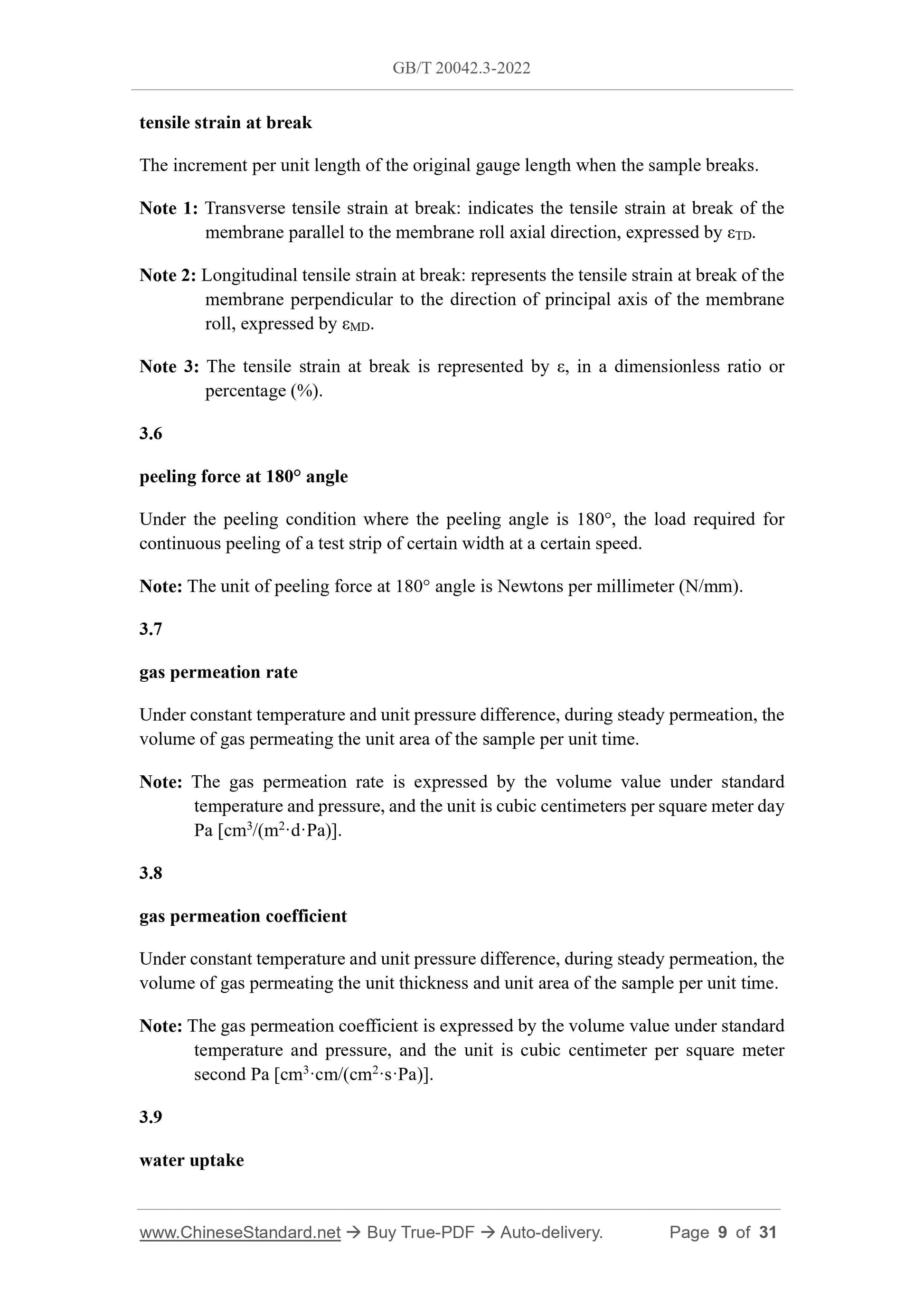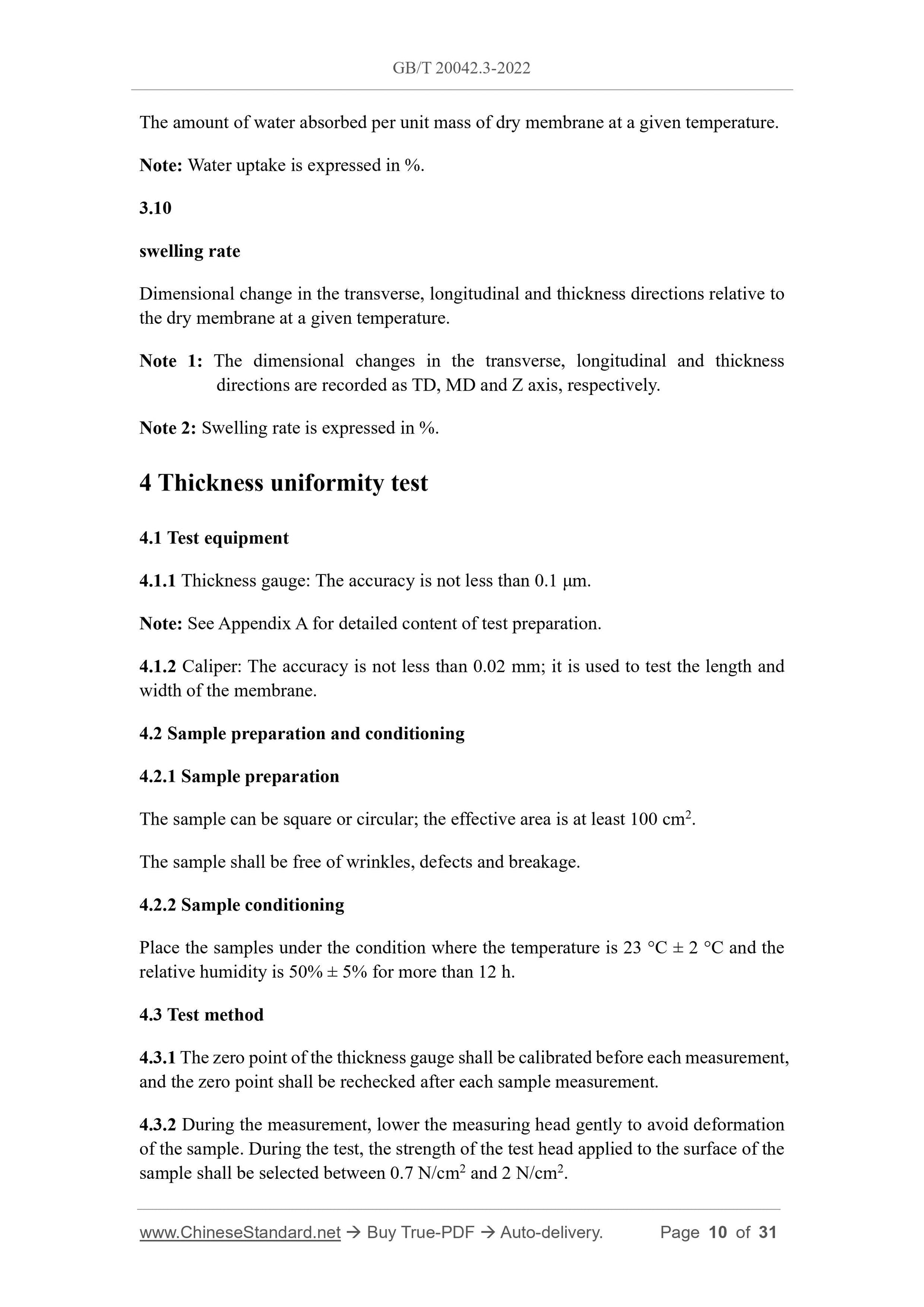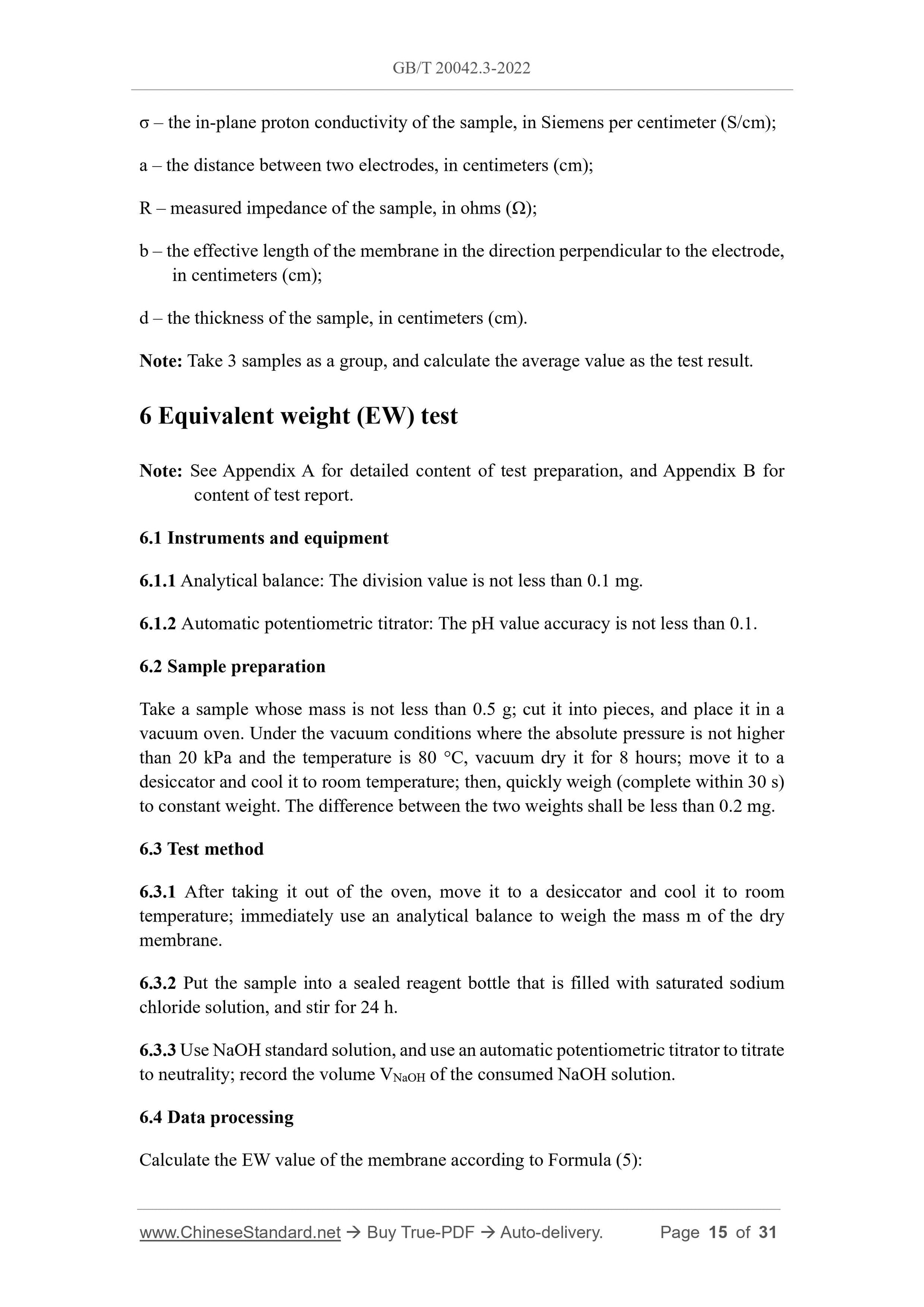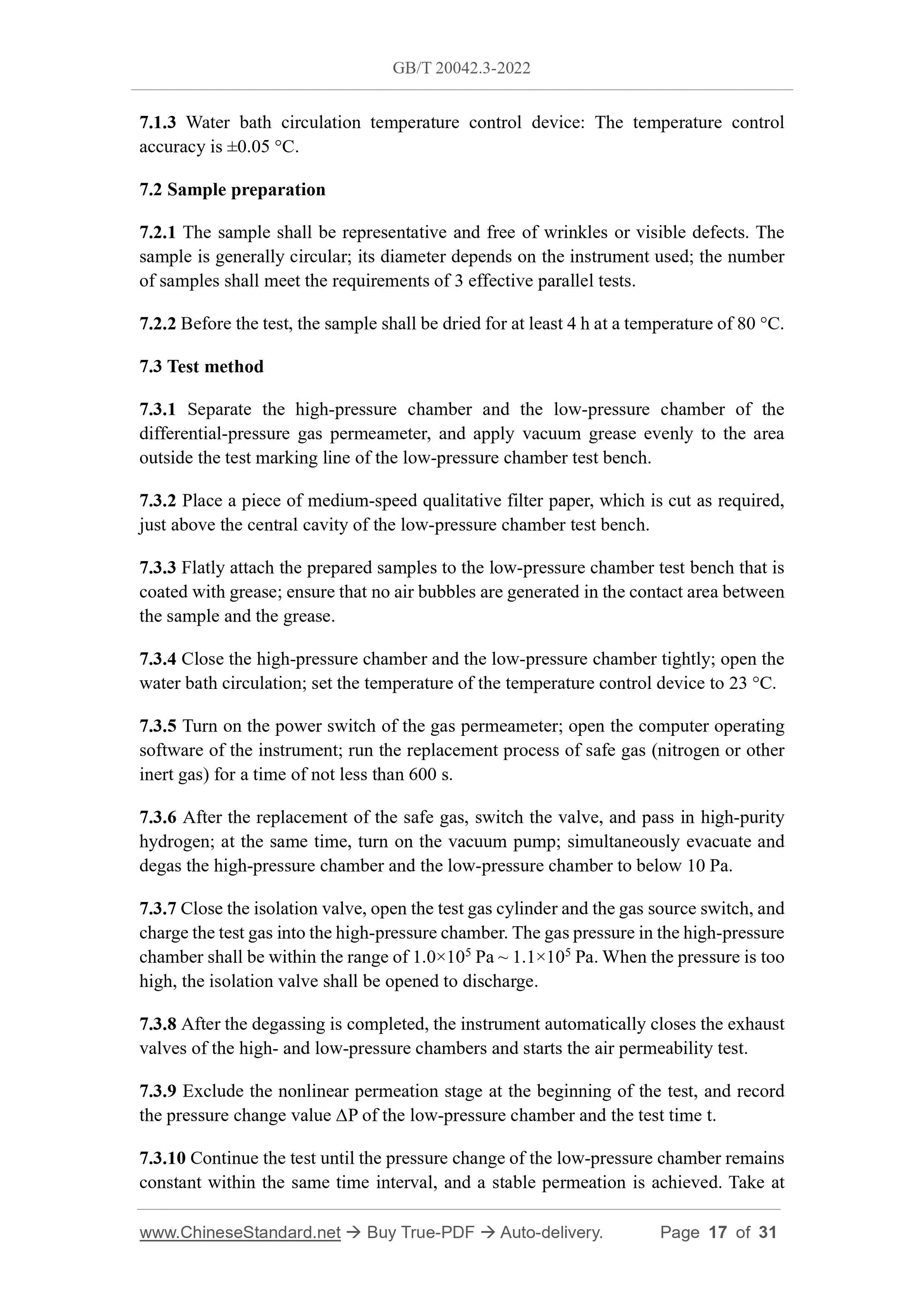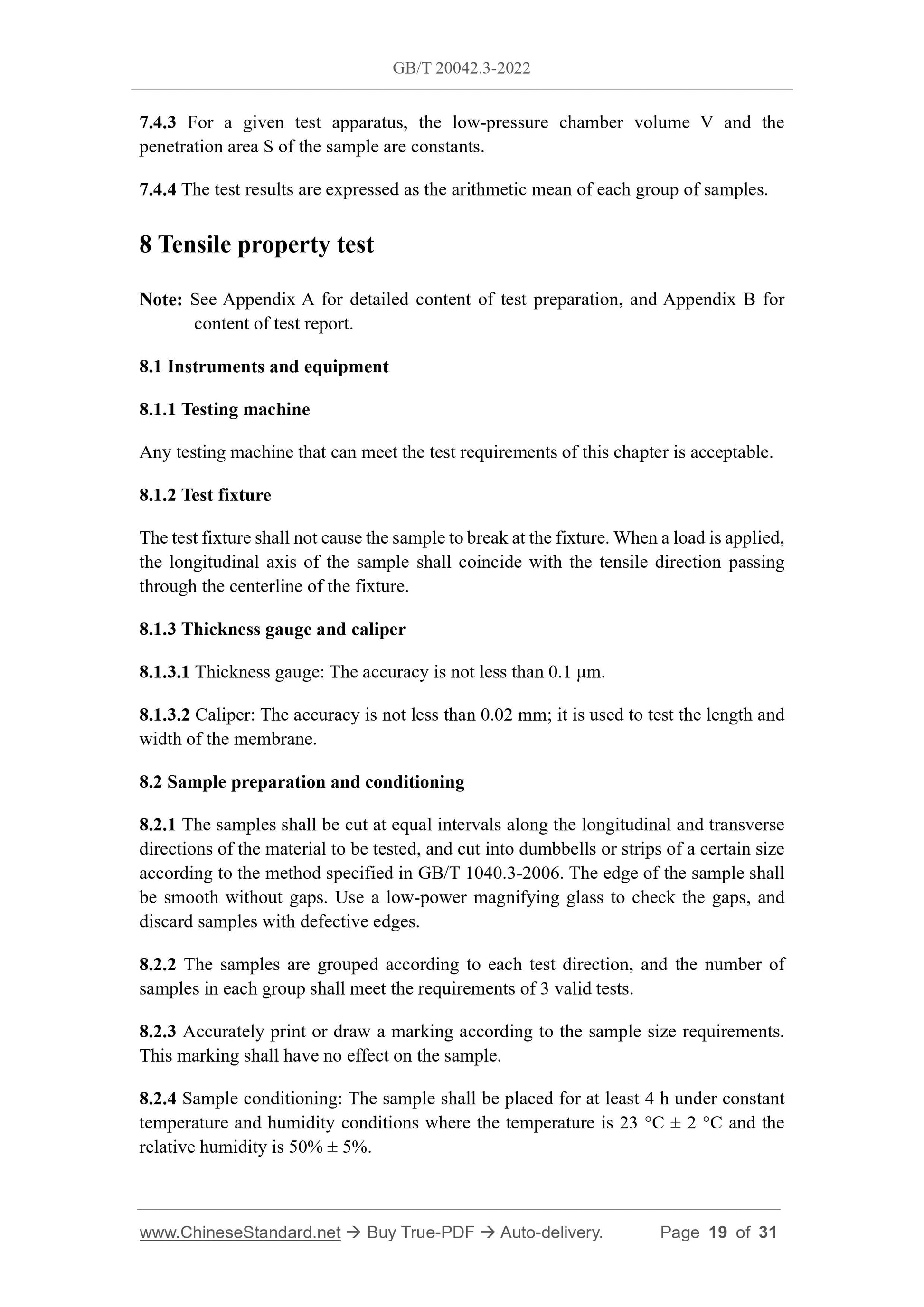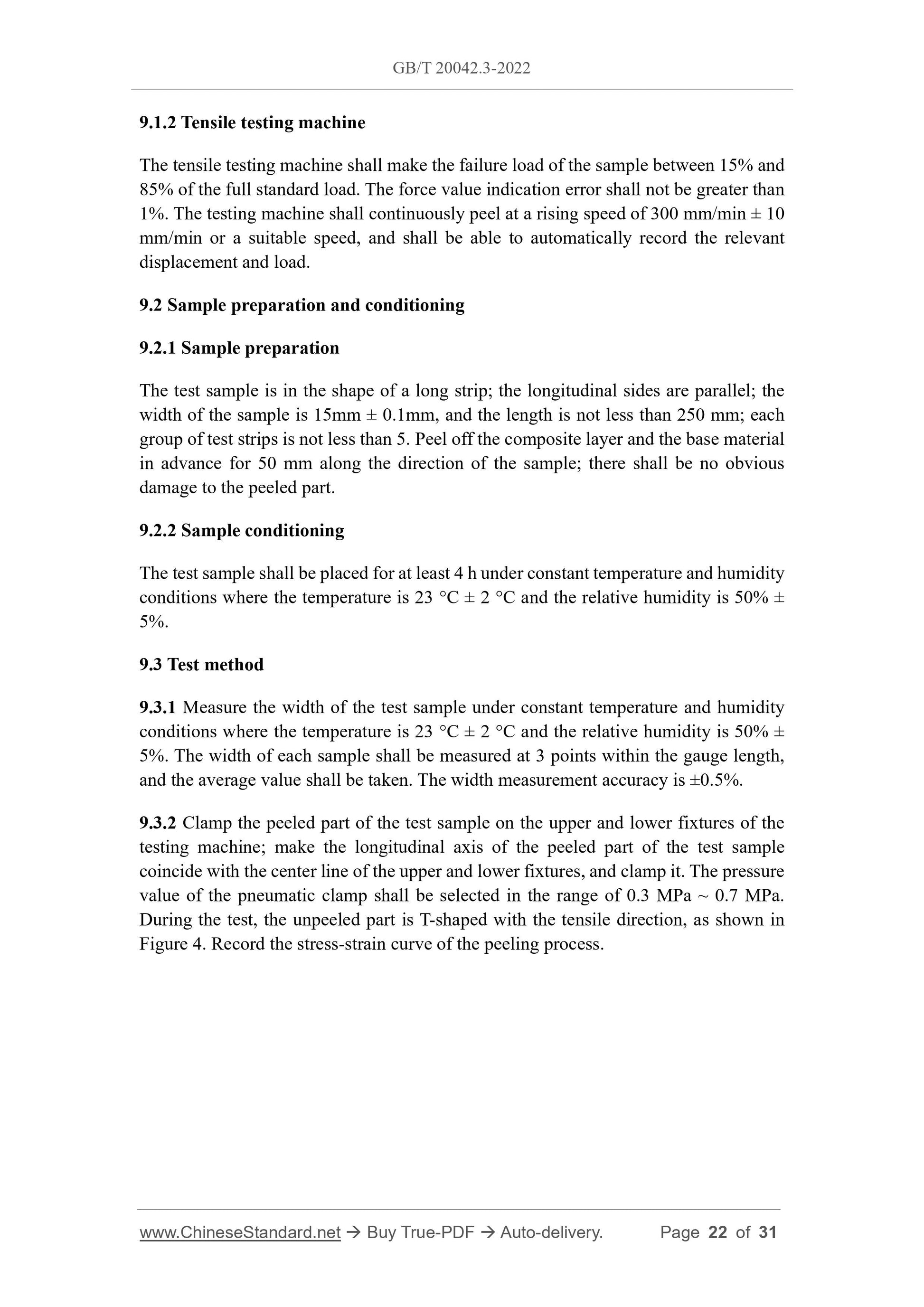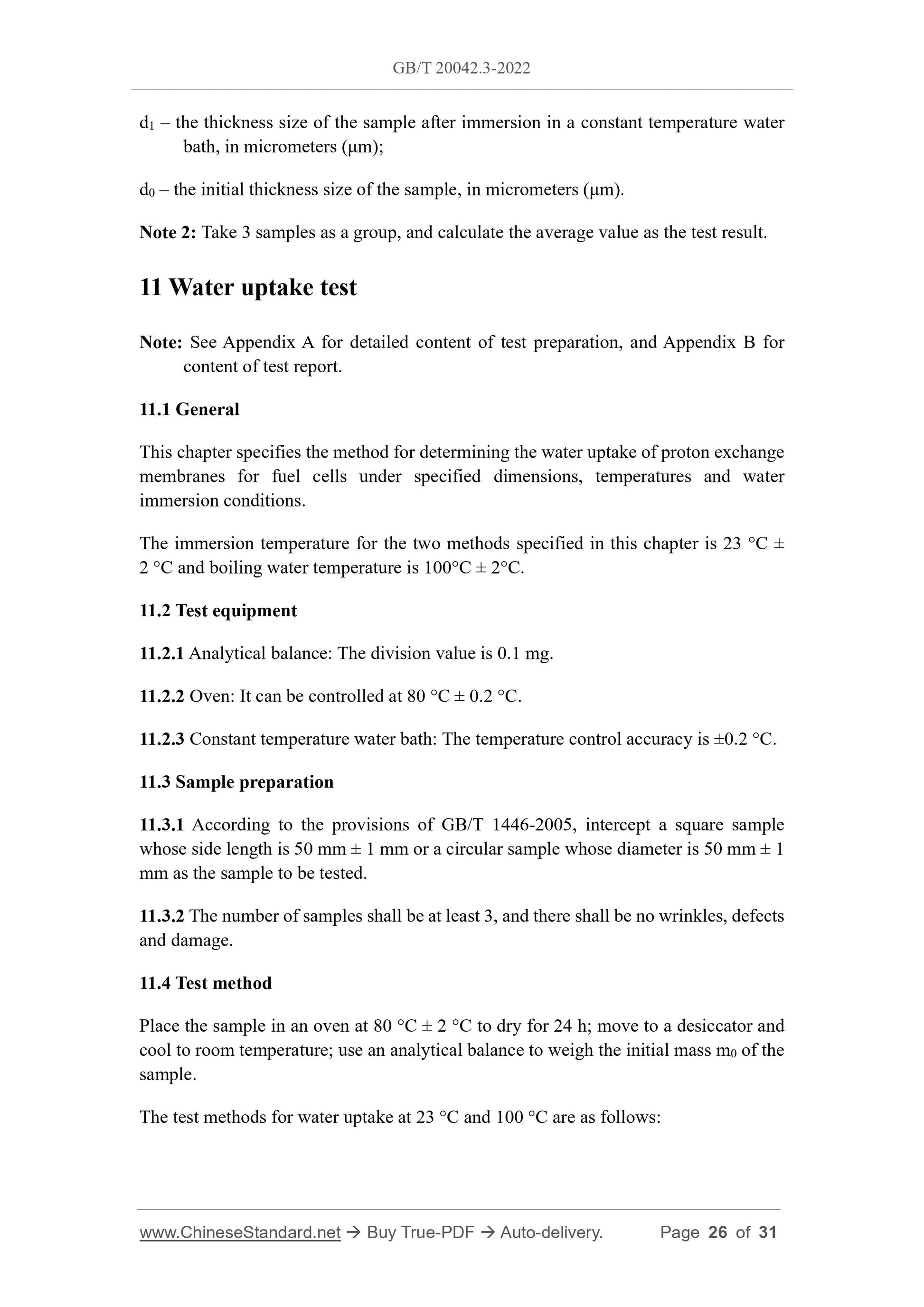1
/
of
12
www.ChineseStandard.us -- Field Test Asia Pte. Ltd.
GB/T 20042.3-2022 English PDF (GB/T20042.3-2022)
GB/T 20042.3-2022 English PDF (GB/T20042.3-2022)
Regular price
$335.00
Regular price
Sale price
$335.00
Unit price
/
per
Shipping calculated at checkout.
Couldn't load pickup availability
GB/T 20042.3-2022: Proton exchange membrane fuel cell - Part 3: Test method for proton exchange membrane
Delivery: 9 seconds. Download (and Email) true-PDF + Invoice.Get Quotation: Click GB/T 20042.3-2022 (Self-service in 1-minute)
Newer / historical versions: GB/T 20042.3-2022
Preview True-PDF
Scope
This document describes the thickness uniformity test, proton conductivity test,equivalent weight test, air permeability test, tensile property test, swelling rate test, and
water uptake test for proton exchange membranes used in proton exchange membrane
fuel cells.
This document applies to all types of proton exchange membranes.
Basic Data
| Standard ID | GB/T 20042.3-2022 (GB/T20042.3-2022) |
| Description (Translated English) | Proton exchange membrane fuel cell - Part 3: Test method for proton exchange membrane |
| Sector / Industry | National Standard (Recommended) |
| Classification of Chinese Standard | K82 |
| Word Count Estimation | 22,228 |
| Issuing agency(ies) | State Administration for Market Regulation, China National Standardization Administration |
Share
